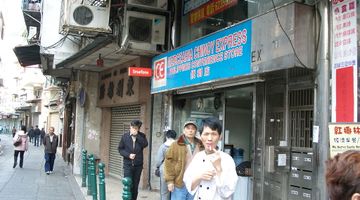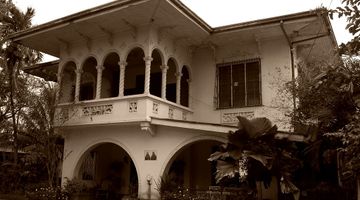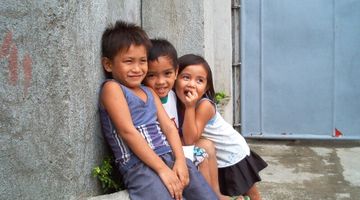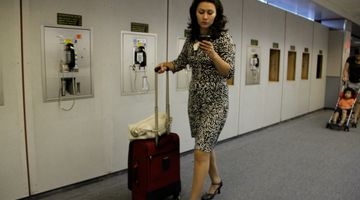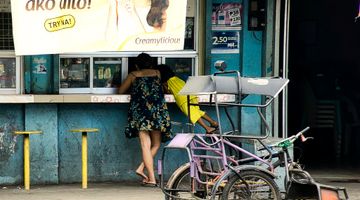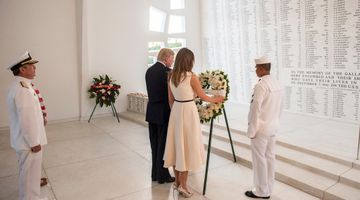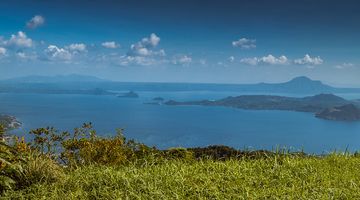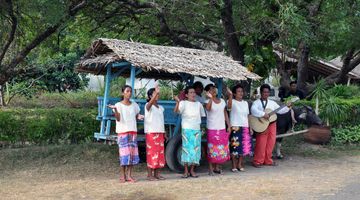The Philippines – Top-12 Best Travel Tips
With thousands of islands, quiet rural mountainsides, and massive cities to explore, the Philippines travel tips is necessary. Planning your trip ahead of time will save you a lot of headaches, because there is a lot that you need to know before coming to the Philippines. A little research on travel tips for Philippines will go a long way, ensuring that you have a memorable and safe experience while reducing the risk for any unwanted and unexpected incidents.
Before you go, read up on these travel tips Philippines.
1. Visa
The very first thing you should do once you decide to come to the Philippines is to check if your passport requires you to obtain a visa. This is essential information and a visa must never be treated as an after thought. There are over 150 countries that do not require a visa to enter the Philippines for varying durations; for example, citizens of the European Union, United States, Australia, and members of the ASEAN (Thailand, Indonesia, Vietnam, Singapore, Malaysia, Cambodia, Laos, Myanmar, Brunei) are permitted to stay in the Philippines without a visa for 30 days. Check what your passport entitles you to, and once you have this taken cared of, you can proceed to planning the rest of your trip. If you intend on staying longer than 30 days, visas are generally easy to extend for a fee.
2. Medicine and toiletries
The largest cities of the Philippines, Manila and Cebu, have world-class hospitals and medical facilities. Drug store chains are easily found throughout the city, so if something should happen to you while traveling to these areas, you are in good hands.
Things are different in coastal towns and remote places; bringing your own medicine and personal effects is one of the top things to know for your trip. This is especially important if you have special health needs such as an inhaler for asthma, feminine products, or medicines that may not be available in the Philippines. The Mercury Drugstore and Watson’s chains are good one-stop shops while you’re in Manila, before heading off to more remote and beautiful destinations that the Philippines has to offer.
Another important thing to keep in mind is that it’s essential to always carry insect repellent wherever you go. Mosquitoes are present everywhere and aside from the obvious nuisances it brings, you’ll also want to avoid contracting dengue in the Philippines.
3. Hotel and flight arrangements
As a general rule of thumb, booking hotels and flights far in advance can result in substantial savings. The peak season in the Philippines runs from November to April, but the super peak seasons of Christmas and Holy Week means that hotels in top destinations (Manila, Cebu, Boracay, Bohol, Baguio, Palawan) oftentimes triple their rates.
If you intend to travel to top tourist destinations during super peak periods, booking as far ahead as possible will save you money. The use of online travel agency services such as Agoda, Expedia, Booking.com, and AirBnB all offer an excellent assortment of accommodations throughout the Philippines to suit all budgets. If you intend to stay for at least 2 weeks in one destination, AirBnB typically offers long-stay discounts.
4. Weather
November to May are the dry months of the Philippines, while the other parts of the year are more prone to thunderstorms and rainfall. However, weather in the Philippines is extremely unpredictable. It’s always hot and humid especially in beach areas, but be prepared for a chance of rainfall. You’ll also want to consider getting travel insurance for your trip – Philippine weather can be unpredictable, and the country is prone to getting battered by strong typhoons which can lead to canceled flights.
5. Culture and etiquette
The Philippines is a very tourist-friendly destination, and with the hospitality that the locals are known for, making friends is easy. But foreigners need to be cautious of communicating with Filipinos who are extremely proud of their local culture but may also be very sensitive when faced with the straightforwardness that is accepted in western culture. It is always appreciated to show basic courtesy such as by saying “please” and “thank you” (salamat in the local language) whenever possible, but most importantly – smile wherever you go!
Filipinos are a happy people, so when you see someone smile at you, don’t forget to smile back. Keep in mind the Filipino value of “pakikisama” which means “getting along”, often displayed by locals to tourists when you are invited to join them in partaking of a local drink or eating with them. Additionally, always have a sense of propriety and display good behavior at all times particularly when you come in contact with Filipina women and elders. On some occasions, foreign men may be greeted by “Hey, Joe!”, but don’t take it personally – it’s just the Filipinos’ way of being friendly and associating Caucasian men with the GI Joes from the American occupation.
6. Money
Before visiting, speak with your local bank to advise them that you’ll be using your ATM and/or credit card while traveling in the Philippines. This way, any transactions done will not be considered fraudulent, which may result in your card getting blocked in the middle of your trip. ATM machines that dispense cash in the local currency (Philippine pesos) are easily found in the top destinations of the Philippines. However, if you will be traveling to remote beaches and rural areas, don’t expect ATM machines to be as available so make sure that you take enough cash with you. It also helps to always have small change (coins and PhP 20, PhP 50, PhP 100 denominations) when traveling to remote areas so that you can easily pay for transportation via a motorbike or tricycle.
When it comes to budgeting, it will depend on your personal preferences and the activities you want to do. Food and drinks in big cities can rack up a serious bill, but one of the best things about traveling to the Philippines is that there is always a more affordable option available. Generally, budget travelers can do away with PhP 1,000 a day, mid-range travelers can spend between PhP 1,000-2,500 a day, and more for luxury travelers. It’s important to factor in the transportation involved for each day of travel, as well as the kind of food and drink you want to enjoy.
7. Tipping
It’s always practical advice to leave a tip of at least 10% if you are happy with food and services throughout the Philippines. Tipping is generally expected from tourists, especially in touristic areas and beach resorts. These are largely appreciated by service providers in the tourism industry in the Philippines since many of those employed in the industry earn minimum wage and it can make a significant difference in their life. Most restaurants and hotels already factor in a 10% service charge (printed as SC on your bill), which means that there is no longer a tip necessary but feel free to be generous especially if you had a very good experience. Some establishments may be stingy in distributing tips to staff, so if someone did a good job serving you or cutting your hair, make sure that the tip goes directly to the person who worked with you whenever you can.
8. Transportation
Metro Manila, the capital of the Philippines, is notorious for traffic. But travelers these days are luckier: the advent of on-demand ride sharing apps such as Uber and Grab have replaced taxis, although they’re still around. These apps provide a safer, more reliable, and hygienic transportation experience within city destinations (Manila and Cebu city). A short ride on one of these services can cost around PhP 100, but these prices can increase to as much as PhP 350 particularly during rush hour.
Private car services may be availed of; the starting rates are around PhP 3,000 with a driver for 8 hours although these rates may be negotiated. Jeepney rides only cost around PhP 10, but they high-risk modes of transport in the city because they are prone to pick-pockets.
In remote areas and provinces, it’s important that you understand that the forms of transport prior to travel especially in rural areas where ride-sharing apps and vehicles are not available.
Motorbikes (locally known as habal-habal) and tricycles are more common in remote areas, including Philippine beaches. They are the main mode of transportation here, and are generally safe; they cost PhP 20 and up for one way depending on the distance and the destination itself. Island-hopping tours are always done via outrigger boat in the Philippine islands; they can cost anywhere from PhP 300 up depending on the destination, and the attractions to be seen.
9. Safety
Generally speaking, the Philippines is as safe as other destinations within Southeast Asia. However, since Philippine President Duterte began office on June 30, 2016, the country has been considered unsafe especially in poor areas where the government’s efforts on the war on drugs continues to plague society. The war on drugs targets local drug syndicates and suspected drug pushers, so it’s still safe for tourists. There are no safety issues to be concerned about in tourist destinations such as Boracay, Cebu, Baguio, Palawan, and Bohol. Just be wary of pick-pockets during your travels and read up on the state of the country especially if you are travelling independently. Avoid the areas of Southwest Mindanao particularly in Zamboanga, locations which are at high risk for terrorist attacks.
10. Language
Next to Tagalog, the local language of the Philippines, English is the most widely spoken language. There are over 100 dialects spoken in the various provinces of the country, although getting around and communication shouldn’t be a problem especially in developed tourist destinations. Most service providers can speak at least a little English, and communication isn’t considered a problem at all.
11. Food
Taking care of the food and drink you consume is one of the most important tips for planning travel to the Philippines. Travelers with sensitive stomachs, or those who haven’t been exposed to other countries in Southeast Asia, may come down with a stomach bug if certain foods are eaten, especially street food which is popular throughout the country. Street food, although cheap and considered delicious by many foreigners, are not manufactured with the food standards in mind, which increases the risk for getting sick. If you have a sensitive stomach, make sure to always bring medications with you. Tap water is not potable, and instead of drinking service water ask for bottled water instead to minimize the risk for contracting food-borne illness.
All restaurants in the Philippines are required to undergo hygiene inspections and training, but international standards are not always enforced especially in small towns. It is best to use your judgment when deciding on what restaurant to eat in; look for those that appear clean and make sure your food is thoroughly cooked.
12. What to pack
Packing well is a must know Philippines tips. People in Manila and Cebu dress very well, given that these are large cities with a massive expat population. Hotels and restaurants have dress codes in these areas, and wearing shorts especially in high-end establishments may cause you to be rejected at the door. If you’re traveling to beaches and remote areas, the dress code is almost nonexistent; flip flops are common and light materials (cotton, linen) will keep you cool despite the heat.
Although many travelers commonly wear as little as possible, it’s best that women avoid wearing anything too revealing (plunging necklines, see-through material) since this can attract cat-callers and improper behavior from the opposite sex, local or otherwise.
Pack light if you can since laundry is easy and inexpensive throughout the country. Sarongs and pashminas are a versatile piece of clothing that can be used in the beach while keeping you cozy during long bus or plane rides. Cover up if visiting any of the Philippines’ churches, especially shoulders and legs.
Don’t forget the sunscreen: it can get very hot in the Philippines especially during the dry months.
...
Traveling in the Philippines will bring about many pleasant surprises. It’s not uncommon for foreigners to never leave after their first stay, because it’s hard to resist the hospitality and warmth of the Filipino people. Keeping these travel tips in mind will ensure your trip is smooth sailing all the way.







